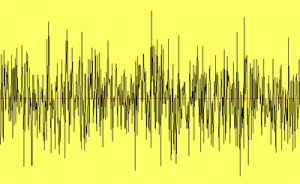Technology is constantly changing the way we interpret real estate, and a couple of new auditory innovations are looking to overhaul our perceptions all over again.
The first, the product of researchers at the University of Granada, uses neural networks to develop an urban noise forecasting model, which would use a number of datasets – street type, road conditions, speed limits, construction projects, etc. – to estimate urban noise levels for properties with a 95-percent reliability.
According to the Journal of the Acoustical Society of America, the university’s software will predict the frequency of the area’s noise and the type of noise, and departments as far ranging as computer science, artificial intelligence, civil engineering and applied physics all contributed to the research.
As impressive as the university’s research is, though, Agent Genius pointed out in a recent article that their auditory-based technology may come out one-step too late. Movity, a real estate search company, engaged in a remarkably similar project in San Francisco, where they partnered with Arup and Stamen Design and hunt decibel readers at 13 major intersections in the Tenderloin section of the city. The resulting data – 1.6 million data points – was visualized in an impressive map of the city:
“Moving into a bad area can greatly affect one’s quality of life,” the company wrote on its blog. “Our goal at Movity is to give home buyers and renters the data and content they want before making a such a large financial commitment. We hope a clear understanding of noise is one of those data points.”
So why should this worry the university? To answer a question with a question – what company purchased Movity in late 2010? San Francisco-based Trulia! which poses another, albeit infinitely louder question – could Trulia nationalize this technology to other major metropolitan areas, and then incorporate it in their standard home searches?
Joe Siciliano, the managing broker for Coldwell Banker’s Lakeview and Halsted offices, is no stranger to noise where he works on the North Side, and he said any kind of “noise score” software would probably be akin to the now-famous Walk Score.
Both, he explained, would offer a quantified measure for something most residents in a particular area already know. So for instance, whereas Chicagoans will know that Lincoln Park is a dense, walkable area, they’ll also know that homes at Sheffield and Armitage will undeniably be impacted by the L station nearby.
“It’s just like everything else,” Siciliano said. “There’s so much more information now.”
Most likely, Siciliano continued, the “noise score” would produce a small, quaint impact on the buying and selling process, but he did add that there could be an implicit advantage to the score – after all, if a client is adverse to living anywhere near the L, maybe a noise score suggesting that noise levels are not that bad would help the agent?


